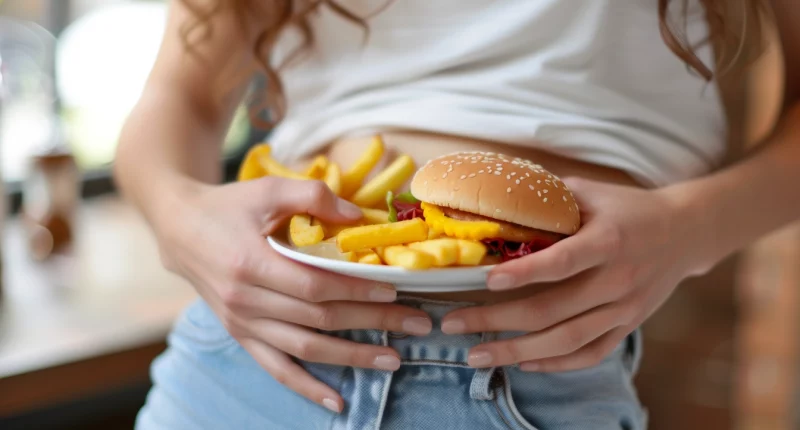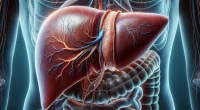Cholecystitis
What is it?
Cholecystitis is an inflammatory lesion of the walls of the gallbladder. The disease is considered one of the most common in gastroenterology. According to statistics, about 20% of the adult population faces the disease. Among patients, women over 40 years of age predominate.
Cholecystitis is associated with biliary motility disorders and changes in the properties of bile. Congestion provokes an increase in intravesical pressure, resulting in impaired blood supply to the walls of the organ. It provokes inflammation, decreased contractility, exudative processes, and loss of protective functions.
About the disease
In conditions of high intravesical pressure, it is easier for infection to penetrate the walls. Inflammatory changes are aggravated, which in turn further increases intravesical pressure. Tissue ischemia is favorable for necrotic, ulcerative, purulent wall changes. Damage to the organ is fraught with peritonitis and death.
Types of cholecystitis
Depending on its origin, cholecystitis can be:
- calculous: caused by changes in the properties of bile, formation of concretions, and blockage of the ducts by stones;
- non-calculous: inflammation is caused by the penetration of parasites into the bladder, violations of enzyme activity, vascular diseases, and insufficient blood supply to the walls.
Based on the peculiarities of the course of the disease, two forms of cholecystitis are distinguished:
- acute: characterized by intense symptoms, pronounced signs of intoxication and inflammation;
- chronic: characterized by an undulating course with periods of exacerbation and remission; symptomatology is often mild.
Another classification of cholecystitis is based on the type of inflammatory process. The following types are distinguished:
- Catarrhal: characterized by marked wall edema, exudation, and narrowing of the ducts;
- Phlegmonous: accompanied by purulent changes;
- Gangrenous: provokes necrosis of tissue;
- Destructive: characterized by the appearance of ulcerative defects and perforation of the walls of the organ.
Based on the severity of symptoms, chronic cholecystitis can occur in three forms.
- Mild. Exacerbations occur up to 2 times a year, accompanied by a moderate pain syndrome, which resolves on its own. Symptoms are present for no more than two weeks.
- Moderately severe. The disease worsens three times a year, accompanied by intense pain and dyspeptic syndromes, which are present for 3-4 weeks. It is accompanied by liver dysfunction.
- Severe. Exacerbations more than three times a year, lasting more than a month, with vivid manifestations. Conservative treatment is ineffective. Accompanied by hepatitis and pancreatitis.
Symptoms of cholecystitis
Acute cholecystitis is accompanied by the following characteristic vivid signs:
- attack-like pain in the right side (irradiates to the shoulder, clavicle);
- weakness;
- sweating;
- sleep disturbances;
- burping with bitterness;
- nausea and vomiting (with bile);
- elevated body temperature;
- chills.
In the calculous form, when blockage of the ducts with nodules often develops, jaundice (yellowing of the skin, mucous membranes, sclerae) is possible. Exacerbations are provoked by nutritional errors, stress, significant physical exertion, and excessive alcohol consumption.
In the chronic form of the disease, in the remission phase, there are no symptoms. Some patients complain of periodic dull pain in the right subcostal area, stool disorders, and flatulence. The stage of exacerbation of chronic cholecystitis is accompanied by symptoms similar to the acute form.
Causes of cholecystitis
In the mechanism of disease development, the central place is occupied by stagnation in the gallbladder. Cholestasis occurs against the background of the following causative factors.
- Gallstone disease. Viscous bile is worse to drain. Concretions provoke traumas of walls and their excessive stretching, sometimes blocking the lumen of the bladder.
- Congenital features. Bile drainage is disturbed in the presence of kinks, adhesions, and pathological narrowing, and stagnation occurs.
- Dyskinesia. Dysfunction of the biliary tract provokes incomplete emptying of the bladder and the formation of stones.
With cholestasis, ideal conditions are formed for the penetration and reproduction of microorganisms in the bladder. Pathogens (bacteria, parasites) can enter the organ from the intestine. Less often, pathogenic microbes penetrate the blood or lymphatic flow from remote foci of chronic inflammation.
The probability of developing cholecystitis is higher for women during pregnancy and the onset of menopause. The risk group also includes people with poor dietary habits, alcohol abusers, and smokers.
Diagnosis of the disease
A gastroenterologist makes a preliminary diagnosis based on the patient’s complaints, anamnesis, and physical examination. A comprehensive examination allows you to determine the causes and types of cholecystitis, which is necessary to select effective treatment tactics. Laboratory diagnostics include:
- general blood test (to assess the extent of inflammation);
- biochemical blood test (to assess the condition of other internal organs);
- microscopic examination of bile (to determine its properties and identify the inflammatory agent).
The primary instrumental method of diagnosis is ultrasound of the gallbladder. During the examination, the doctor assesses the size of the organ, the condition of the walls and surrounding tissues, the presence of concretions, and the patency of the ducts. In case of low informativeness of ultrasound diagnostics, computed tomography with contrast is performed, which allows a thorough study of the gallbladder and nearby organs and the volume of inflammatory and ischemic processes.
Treatment methods for cholecystitis
The choice of treatment method for cholecystitis in adult men and women depends on the initial cause of the disease, the severity of symptoms, and the presence or absence of signs of damage to other organs, particularly the pancreas. All measures are aimed at suppressing inflammation, improving bile outflow, and preventing pathology recurrences. In complicated cases, when there is a threat to the patient’s life or conservative treatment is ineffective, surgery is performed.
Conservative treatment of cholecystitis
In the acute period, inpatient therapy is carried out under the supervision of a gastroenterologist. The doctor prescribes analgesics, anti-inflammatory, antispasmodic, and antibacterial agents. After the elimination of acute inflammation, drugs that normalize bile’s properties and outflow increase the tone of the bladder walls and indicate vitamin complexes. In complex therapy aimed at rapid and complete recovery, physiotherapeutic techniques are used:
- electrophoresis;
- ultrasound therapy;
- mineral baths;
- mud treatment;
- heat applications.
A significant role is given to diet to control the inflammatory process, which implies frequent food consumption in small portions. The diet excludes alcohol and all harmful products (sauces, fast food, sweets). To achieve a stable remission, the use of mineral water is recommended. In the chronic form, the patient must constantly adhere to the diet and be examined twice a year.
Surgical treatment of cholecystitis
Chronic calculous cholecystitis, as well as the stone-free form with a high risk of complications, requires surgical treatment. Cholecystectomy (gallbladder removal) can be performed in the classic “open” way or by laparoscopy. Low-traumatic laparoscopic operations involve access through several punctures in the anterior abdominal wall. Doctors perform a revision of the gallbladder and surrounding organs using an optical device, after which they remove the bladder. Low-traumatic operations provide excellent cosmetic results, low blood loss, and reduce the risk of complications in the postoperative period. In addition, after such interventions, the patient leaves the hospital in 2-3 days, and the recovery period is relatively fast.
All these treatment options are available in more than 600 hospitals worldwide (https://doctor.global/results/diseases/cholecystitis). For example, Laparoscopic cholecystectomy can be performed in 23 clinics across Turkey for an approximate price of $3.5 K (https://doctor.global/results/asia/turkey/all-cities/all-specializations/procedures/laparoscopic-cholecystectomy).
Prevention of cholecystitis
To prevent cholecystitis or its exacerbations, it is necessary to adhere to the basics of a rational diet and give up bad habits. Important measures are an active lifestyle, timely treatment of infectious diseases, avoiding stress, and increasing stress resistance.
Patients with already diagnosed pathology should undergo regular preventive examinations. It is essential to pay special attention to health in the fall and spring periods when chronic diseases are often aggravated.
Rehabilitation after cholecystitis
In the postoperative period, physical exertion, alcohol consumption, and heavy lifting are prohibited. Refusing bathing, sauna, or bathing in open water for a month is necessary. To normalize the bile secretion, you should use medications prescribed by the doctor and follow the diet.

